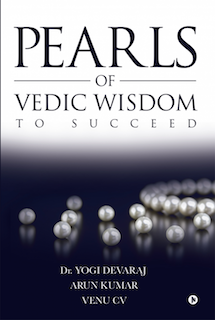According to Advaita Vedanta the contentment is called Vairagya (dispassion) and is one of the four qualifications called Sadhana Chatushtaya which are required by a seeker to attain the ultimate goal which is Self-Realization.
Please note that before Vairagya (dispassion) one needs to have Viveka (reasoning and discriminating wisdom).
Swami Vivekananda says, “Fulfill your desire for power and everything else, and after you have fulfilled the desire, will come the time when you will know that they are all very little things; but until you have fulfilled this desire, until you have passed through that activity, it is impossible for you to come to the state of calmness, serenity, and self-surrender”. This kind of reasoning, discerning and discrimination is called Viveka.
Interestingly this is exactly what Socrates says, “The unexamined life is not worth living”, urging us to indulge in the worldly things so that we can have a deep comprehension of the world, clearly understand and realise the transient and momentary happiness they provide.
It was the same poverty-stricken Socrates while striding through the city’s busy central marketplace, looking at the heap of several things for sale, he would harrumph provocatively, “How many things I have no need of!“. That’s the sign of the wise who have developed Vairagya (dispassion and contentment).
Basically, Vairagya (dispassion and contentment) is not gloating over something we have and not desperately craving for something which we do not have.
See Also:


Post a Comment
Post a Comment